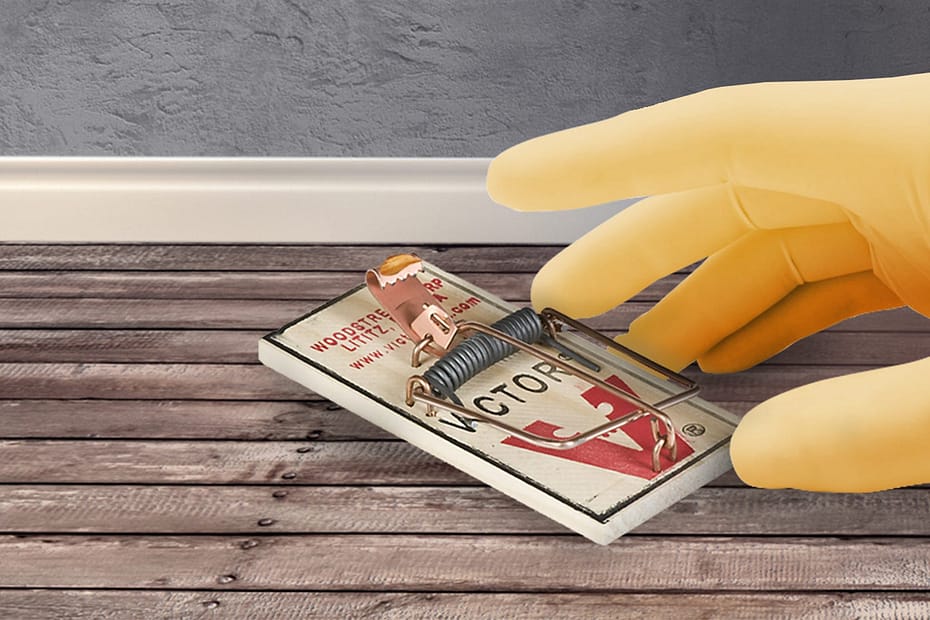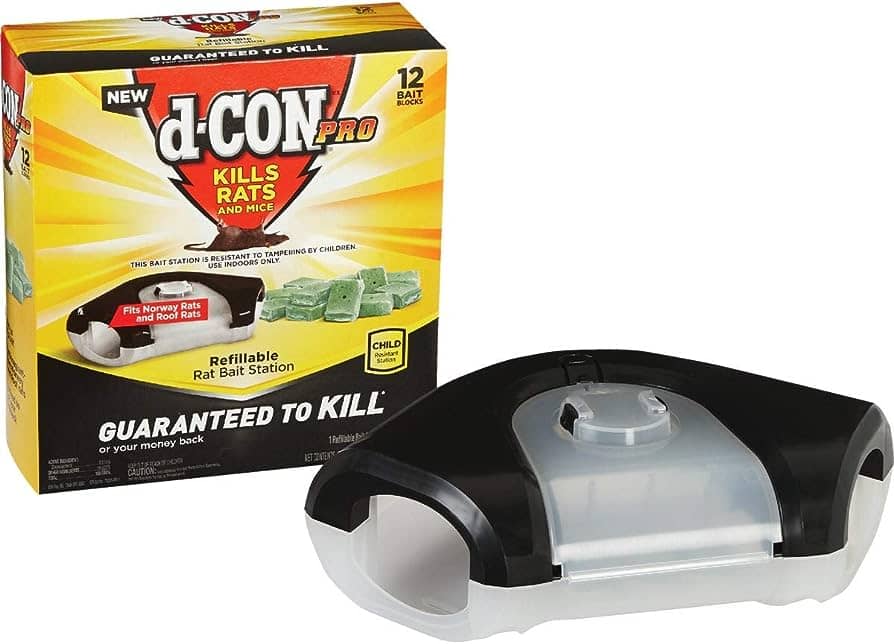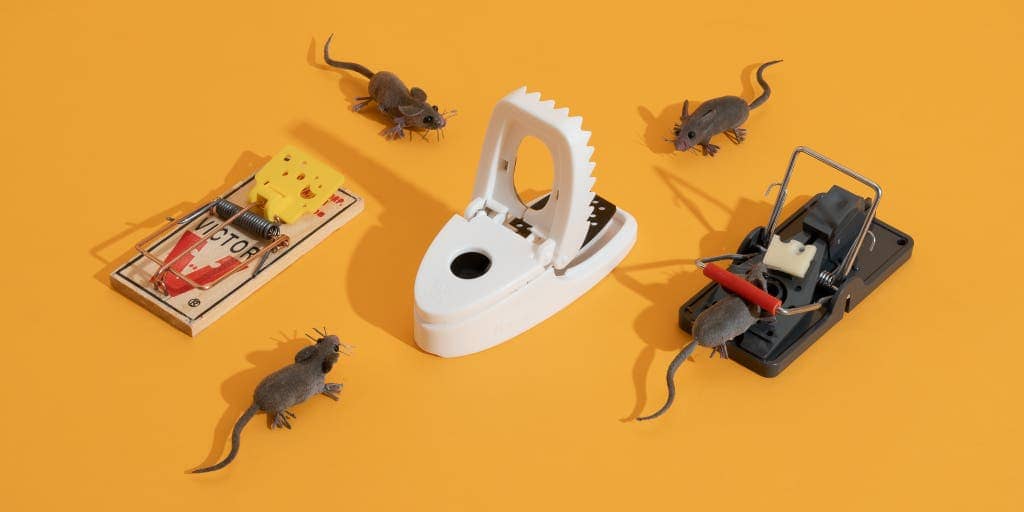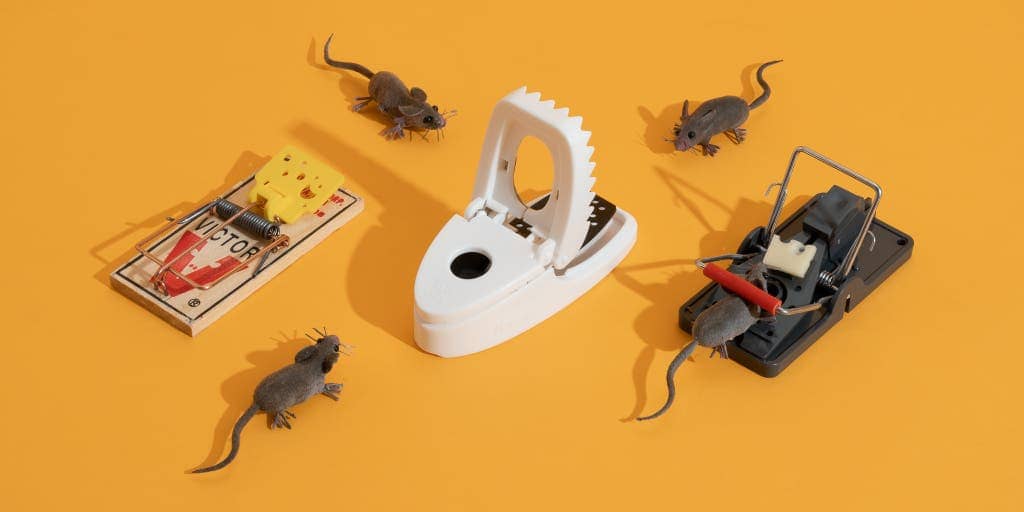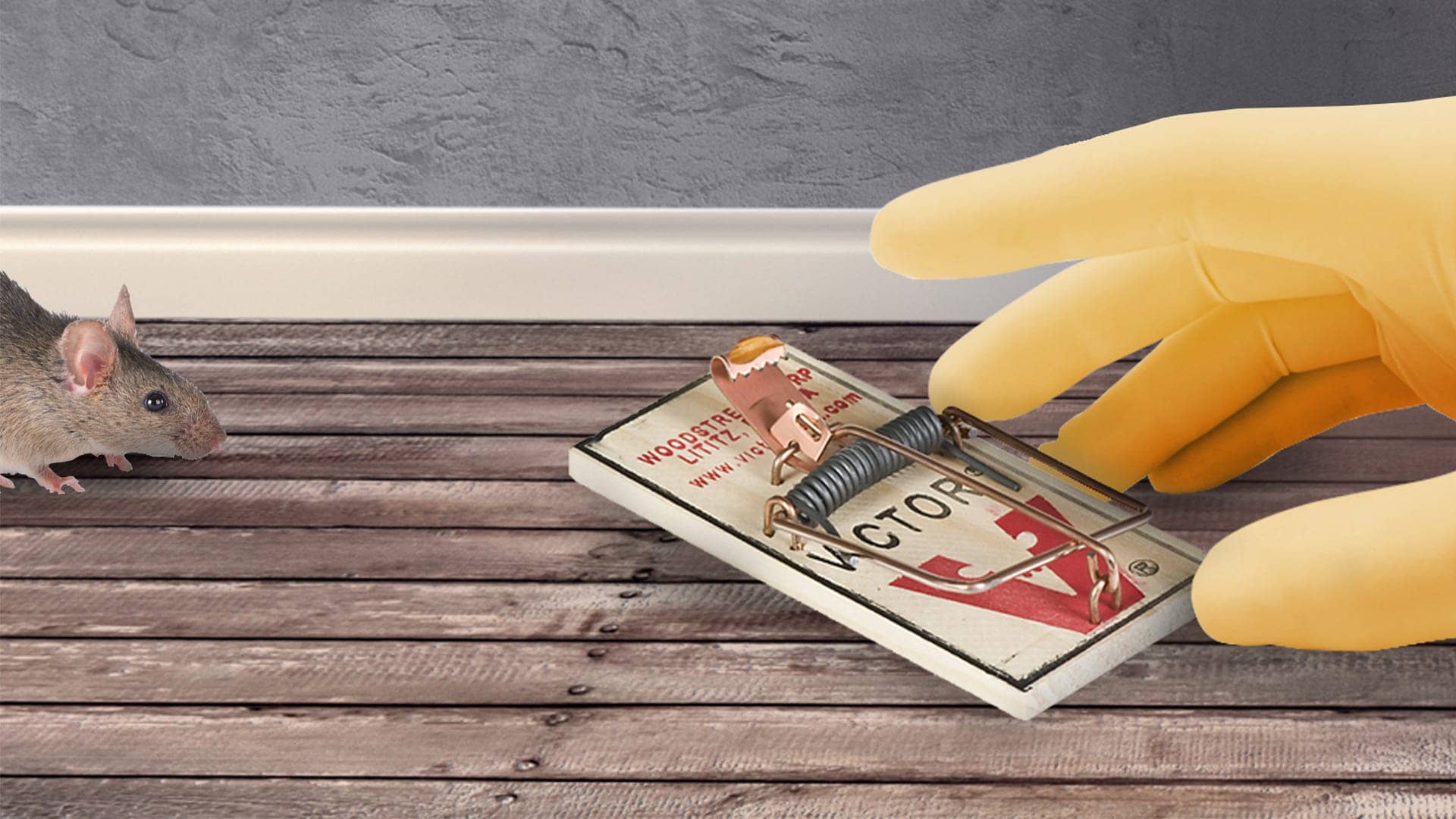Attract mice to mouse traps with scented lures for effective trapping. Mice can be a persistent problem in homes and businesses, causing damage and spreading diseases.
One effective method to control mice is by using mouse traps with scented lures. These lures attract mice by mimicking their natural food sources or releasing strong odors that mice find irresistible. By using scented lures, you can increase the chances of mice being lured into the traps and prevent further infestations.
We will explore various types of scented lures and how to use them effectively to attract mice to your mouse traps. Whether you are dealing with a minor mouse problem or a full-blown infestation, scented lures can be a valuable tool in your mouse control strategy.
Understanding The Importance Of Scented Lures For Mouse Traps
Scented lures play a crucial role in attracting mice to mouse traps. These enticing scents help lure mice into the trap, increasing the chances of successful trapping and removal.
When it comes to capturing mice effectively, using scented lures for mouse traps is crucial. These lures play a significant role in attracting mice and increasing the chances of successfully trapping them. Let’s explore how scent affects mouse behavior and the role of pheromones in this process.
How Scent Affects Mouse Behavior
- Mice have a highly developed sense of smell, and they heavily rely on scent to navigate their surroundings and communicate with others. Understanding how scent affects mouse behavior helps us leverage this knowledge to attract them towards the traps. Here are the key points to consider:
- Mice are attracted to food-related scents: Mice are driven by their constant search for food. Introducing scents that replicate their preferred food sources can make your traps more enticing to them.
- Scent trails lead mice to the traps: By strategically placing scented lures along the mice’s common pathways, you can create scent trails that lead them directly to the traps. This technique increases the chances of capturing them successfully.
- Scent can help overcome mice’s aversion to new objects: Mice are naturally cautious creatures, and they may be wary of new objects in their environment. However, using scents that mimic their natural pheromones or familiar odors can help overcome this aversion and make them more comfortable exploring the trap.
The Role Of Pheromones In Attracting Mice
- Pheromones play a significant role in the social behavior of mice. These chemical signals are secreted by mice to communicate with each other and convey specific messages. When it comes to attracting mice to traps, understanding the role of pheromones is crucial:
- Pheromones indicate safety and familiarity: Mice release specific pheromones to mark territories and communicate with other mice. By incorporating pheromones into scented lures, we can create an environment that signals safety and familiarity to mice, making them more likely to approach the trap.
- Pheromones trigger curiosity and exploration: Certain pheromones can spark a sense of curiosity and encourage mice to explore their surroundings. By incorporating these pheromones into the lures, we can stimulate their natural instincts and increase the likelihood of them entering the trap without hesitation.
By leveraging scent and understanding the role of pheromones, we can create an environment that is highly attractive to mice and increases our chances of successfully trapping them. Next, let’s explore some effective scented lure options to consider for your mouse traps.
Choosing The Right Scented Lure For Your Mouse Traps
Looking to attract mice with scented lures for your mouse traps? Discover how to choose the right scent that will entice mice effectively, ensuring successful trap placement.
————————————————————–
Common scents that attract mice:
- Peanut butter: The strong aroma of peanut butter makes it a popular choice for mouse traps. The smell is irresistible to mice, and they will be drawn to it.
- Cheese: Another classic scent that mice are attracted to is cheese. The strong, pungent odor of cheese makes it an effective lure for trapping mice.
- Chocolate: Mice have a sweet tooth, and the sweet smell of chocolate can be alluring to them. Using chocolate as a scented lure can increase your chances of catching mice.
Factors to consider when selecting a lure:
- Scent intensity: Choose a scented lure that has a strong and distinct smell. Mice have a keen sense of smell, so a potent scent will be more appealing to them.
- Mouse preferences: Mice have individual preferences when it comes to scented lures. Experiment with different scents to determine which ones are most effective in your specific location.
- Safety: Ensure that the scented lure you choose is safe for use around children and pets. Avoid toxic substances that could harm anyone in your household.
DIY scented lure recipes:
- Bacon fat: The greasy smell of bacon fat is highly attractive to mice. Simply collect bacon fat and smear it on the mouse trap for an effective homemade lure.
- Vanilla extract: The sweet scent of vanilla extract can be used as a homemade lure for mouse traps. Apply a small amount to the trap to entice mice.
- Cinnamon: Mice are known to be repelled by the scent of cinnamon. Sprinkle some ground cinnamon around the mouse trap to deter them and increase the likelihood of trapping them.
Remember, the key to choosing the right scented lure for your mouse traps is to consider the common scents that attract mice, factors such as scent intensity and mouse preferences, and DIY scented lure recipes. Experiment with different options to find what works best for you.
Happy trapping!
Optimizing The Placement Of Scented Lures
Optimizing the placement of scented lures is crucial for effectively attracting mice to mouse traps. By strategically positioning these enticing fragrances, you can maximize the chances of successfully trapping and removing mice from your property.
Identifying High-Traffic Areas For Mice
- Mice are attracted to areas with ample food sources, so it’s crucial to identify high-traffic areas where they are likely to frequent. Here are some key points to consider:
- Look for signs of mice activity such as droppings, chewed wires, or torn packaging.
- Mice tend to prefer dark, secluded spaces like attics, basements, and crawl spaces.
- Areas with easy access to food, such as kitchens, pantries, and garbage areas, are also common hotspots.
- Keep an eye out for small holes or cracks in walls, floors, or foundations, as these can serve as entry points for mice.
Strategic Placement Of Traps And Lures
- Placing traps and lures strategically is vital for successful mouse control. Consider the following points:
- Position traps along walls and in corners, as mice tend to follow edges to navigate their surroundings.
- Place traps near areas that show signs of mouse activity, such as chewed wires or gnaw marks.
- Use multiple traps in high-traffic areas to increase the chances of capture.
- Make sure the traps are positioned where they won’t be disturbed by humans, pets, or children.
- Opt for a mix of snap traps, glue traps, and humane catch-and-release traps to cover different trapping preferences.
- Experiment with different types of bait to find the most enticing lure for the mice in your area.
Maintaining A Consistent Lure Presence
- Consistency is key when it comes to attracting and capturing mice. Here’s what you need to know:
- Regularly check and replace bait to ensure its freshness and effectiveness.
- Clean and sanitize traps between uses to eliminate any potential deterrents, such as residual odors or debris.
- Place new traps immediately after capturing mice to maintain a consistent presence.
- Consider using scented lures that mimic food sources commonly sought after by mice, such as peanut butter, chocolate, or cheese.
- Avoid handling traps and lures with bare hands to minimize the transfer of human scent.
By following these tips, you can optimize the placement of scented lures, increasing your chances of attracting mice and effectively trapping them. Remember, consistency and strategic positioning are key components for successful mouse control.
Enhancing The Effectiveness Of Scented Lures For Mouse Traps
Enhance the effectiveness of mouse traps by using scented lures to attract mice. Increase the chances of successful trapping with these potent lures.
When it comes to dealing with a mouse infestation, using scented lures in conjunction with mouse traps can greatly increase your chances of success. Mice have a keen sense of smell, and by strategically enhancing the potency of scented lures, you can attract them more effectively and ensure a higher capture rate.
Here are some strategies to consider:
Strategies For Increasing Lure Potency:
- Use strong-scented lures: Opt for highly fragrant substances that mice find irresistible, such as peanut butter, bacon bits, or even pure vanilla extract. These strong smells are more likely to catch the attention of curious mice.
- Experiment with different scents: Mice are known to have individual scent preferences, so it’s worth trying out various scents to see which ones work best in your situation. Consider using cheese, chocolate, or even a small piece of fruit as alternative lures.
- Cheese: The pungent odor of cheese is a classic lure that has proven effective in catching mice. Its strong smell can attract mice from a distance.
- Chocolate: The sweet aroma of chocolate can also be enticing to mice. Try using a small piece of chocolate as a lure and observe if it yields positive results.
- Fruit: Some mice have a fondness for the scent of fruit. Experiment with different types like apple or banana slices and see if it increases the trapping success.
- Combine scents for better attraction: Enhance the allure of your mouse trap by using a combination of scents. Mixing peanut butter with a sprinkle of cinnamon or adding a drop of vanilla extract to the lure can create an irresistible scent cocktail for mice.
- Monitor and refresh scented lures: Keep a close eye on your mouse traps and regularly check the efficacy of the scented lure. Over time, the scent may fade or become less appealing to mice. Refreshing the lure regularly ensures that it remains potent and enticing.
- Proper placement of lures: Position scented lures strategically near areas where mice are likely to travel, such as along walls, near entry points, or in areas where droppings have been found. Placing the lure in an easily accessible spot will increase its chances of being discovered by curious mice.
By implementing these strategies, you can enhance the effectiveness of scented lures for your mouse traps and increase your success in capturing those pesky critters. Remember to experiment with different scents and regularly monitor and refresh your lures for optimal results.
Dealing With Common Challenges And Pitfalls
Learn how to effectively deal with common challenges and pitfalls when attracting mice with scented lures for mouse traps. Discover practical strategies to enhance your success and overcome difficulties.
Attracting mice with scented lures for mouse traps can be an effective way to control rodent infestations. However, there are some common challenges and pitfalls that you may encounter along the way. To ensure the success of your trapping efforts, it is important to address these challenges head-on.
In this section, we will discuss how to overcome bait aversions in mice, address scent fatigue, and prevent non-target captures.
Overcoming Bait Aversions In Mice
Mice can become wary of certain scented lures, making it difficult to attract them to the traps. If you’re facing this challenge, here are some strategies to consider:
- Use different bait options: Experiment with a variety of bait options to find out what appeals to the mice in your area. Some common bait options include peanut butter, chocolate, bacon, or even dried fruit.
- Rotate bait types: Mice might develop aversions to specific scents over time. By regularly switching the bait you use, you can prevent them from becoming resistant to a particular lure.
- Clean and refresh traps: Regularly clean and refresh the traps to remove any lingering odors that might deter mice from approaching.
Addressing Scent Fatigue
Mice can become desensitized to scented lures if they encounter them repeatedly without any consequences. To overcome scent fatigue, consider the following tips:
- Use fresh bait: Regularly replace the bait in your traps to ensure its potency. Fresh bait tends to have a stronger scent, making it more attractive to mice.
- Change trap locations: If mice seem to be avoiding the traps, try moving them to different locations. This will prevent the mice from associating the traps with previous encounters.
- Reset traps frequently: Resetting traps frequently ensures that the bait is always fresh and appealing to mice. This increases the chances of capturing them effectively.
Preventing Non-Target Captures
When using scented lures for mouse traps, it’s essential to prevent non-target captures. Here’s how you can minimize the risk:
- Use size-appropriate traps: Choose traps that are specifically designed for mice to avoid capturing larger rodents or non-target animals.
- Secure traps in safe locations: Place traps in areas that are inaccessible to pets or non-target wildlife. Consider using protective covers to further prevent accidental captures.
- Monitor traps regularly: Regularly check the traps to ensure that non-target animals, such as squirrels or birds, are not captured. If any non-target captures occur, release the animal safely and adjust trap placement accordingly.
When using scented lures for mouse traps, it’s important to overcome bait aversions, address scent fatigue, and prevent non-target captures. By implementing these strategies, you can increase the effectiveness of your trapping efforts and maintain a pest-free environment.

Credit: www.amazon.com
Frequently Asked Questions About Scented Lures For Mouse Traps
Learn how to effectively attract mice with scented lures for mouse traps. Discover frequently asked questions and get expert tips for successful trapping.
How Long Do Scented Lures Last?
- Scented lures for mouse traps typically last for several weeks, providing an effective attractant for mice.
- The duration may vary depending on factors such as the lure’s quality, storage conditions, and the frequency of mouse activity in the area.
- As a general rule, it is recommended to replace the scented lure every 2-4 weeks to maintain its effectiveness and maximize the chances of trapping mice.
Can You Reuse Scented Lures?
- Scented lures cannot be reused once they have been exposed to mouse activity or used in a trap.
- The scent on the lure diminishes over time, losing its effectiveness in attracting mice.
- Reusing a scented lure that has already been used may result in a lower chance of successfully luring mice into the trap.
Are There Any Alternatives To Scented Lures?
- While scented lures are commonly used to attract mice to traps, there are alternative methods that can be effective as well.
- Some alternatives include using food bait like peanut butter, chocolate, or breadcrumbs, which can be appealing to mice due to their strong smell and taste.
- Another option is using nesting materials such as cotton balls or small pieces of fabric, as mice are attracted to these materials for building their nests.
- It’s important to note that the effectiveness of alternative lures may vary depending on the specific mouse species and their preferences in the area.
- Experimenting with different bait options can help determine the most effective method for attracting mice to traps.
Frequently Asked Questions Of Attracting Mice With Scented Lures For Mouse Traps
What Is The Best Thing To Put On A Mouse Trap To Attract Mice?
The best thing to put on a mouse trap to attract mice is peanut butter.
Can Mice Smell Human Scent On Mouse Traps?
Yes, mice can smell human scent on mouse traps due to their strong sense of smell.
Will Mice Bait Attract More Mice?
No, mice bait does not attract more mice. Using mice bait effectively eliminates the existing mouse population.
Can Mice Smell Bait Stations?
Yes, mice can smell bait stations and are attracted to them as a food source.
Conclusion
With the right scented lures, you can significantly increase the effectiveness of your mouse traps. By appealing to the highly developed sense of smell that mice possess, you have a better chance of attracting them to your traps and successfully eliminating them from your home or workplace.
Remember to choose scents that are known to be appealing to mice, such as peanut butter or chocolate, and place them strategically near the traps. Regularly refreshing the scent will also help maintain its effectiveness. Once you have successfully trapped the mice, be sure to dispose of them safely and clean the area thoroughly to prevent any future infestations.
By following these tips, you can take control of the mouse problem and create a safer and healthier environment for yourself and others.
